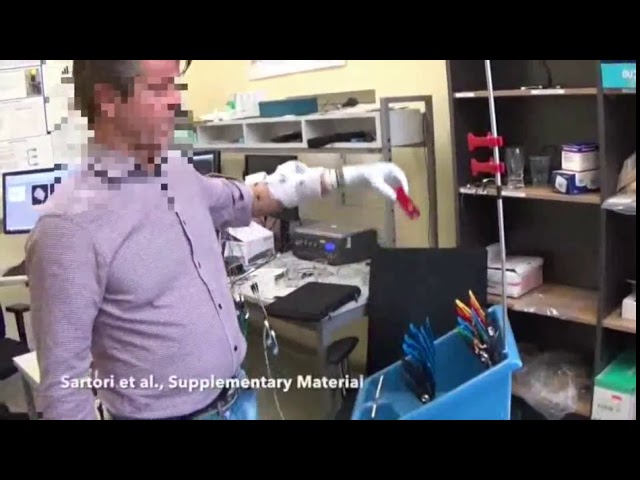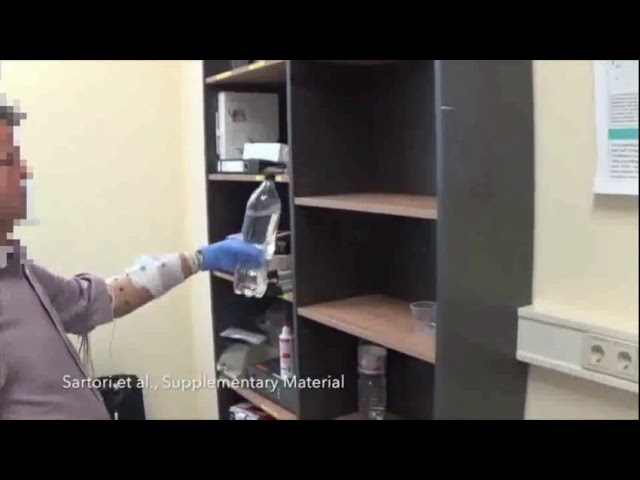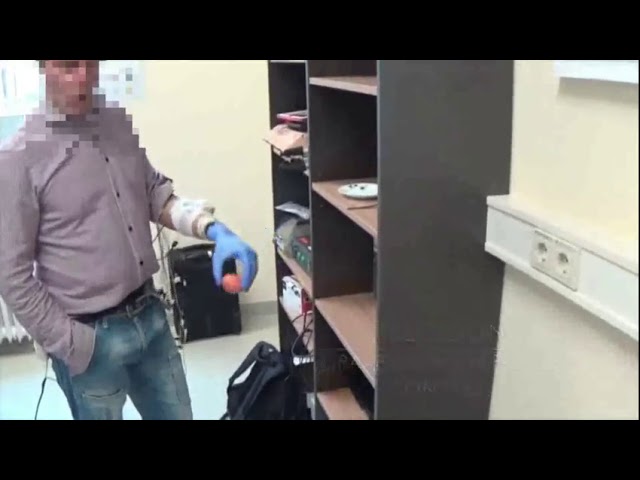In a recent paper published on Journal of Neural Engineering, researchers at the University of Twente (NL), in cooperation with Imperial College London (UK) and University of Aalborg (DK) have presented a radically new technology that enables upper-limb amputees to control robotic prostheses as a natural extension of the own body. The technology is based on the concept of musculoskeletal modelling and represents an alternative to widely used machine learning methods.
There are millions of people around the world that lost some part of their body as a result of amputation. Engineering solutions have the potential for immediate and sometimes dramatic restoration of the lost motor skills. However, despite advances, current prosthetic limbs provide limited functionality.
Movement in able-bodied individuals begins with electrical impulses sent by the brain that trigger muscles into action. A surrogate of these brain signals can be recorded from peripheral muscles in the form of electromyograms (EMGs) via electrodes placed on the skin.
The available solutions
In upper-limb amputees, EMG signals measured from the muscles remaining after amputation can be used to steer prosthetic arms in real-time. Established methodologies rely on machine learning. Its algorithms can detect patterns in EMG signals that are distinctive of a given movement. These algorithms learn by example. This means that, instead of needing to fully understand the human body, they can workout the links between EMG signals and a given movement by themselves. Once an EMG pattern is detected this can be associated to a movement in the prosthetic arm.
However, despite widespread use, machine learning algorithms are sensitive to changes in EMG properties due to noise, electrode placement and muscle fatigue. The major problem is that, in order to control the prosthesis functionalities, the amputee needs to learn to systematically produce different EMG patterns; something that may not always be possible. The consequence is that this type of technology provides limited reliability over the control of the prosthesis. Therefore, amputees often reject it.
The new solution
In a recent paper, an international team of scientists, coordinated at the University of Twente by Dr. Massimo Sartori, proposed an alternative solution to machine learning. The researchers succeeded in creating a detailed digital model of the amputee's lost arm (e.g. the phantom arm) and the organic tissues within. Such digital model included the accurate description of the amputee's lost muscles, tendons and articular joints. The researchers recorded EMG signals from the residual forearm after amputation. These signals were then used to determine how virtual muscles in the model would activate as well as the resulting movement that would be produced in the complete virtual phantom arm. The movement predicted in the phantom arm was then transmitted to the robotic prosthesis in real-time. For the first time, this enabled the amputee to control the prosthetic arm as a natural extension of the own body.
Using this new technology the amputee did not need to reproduce a specific pre-defined EMG pattern, as required for machine learning. Instead, the amputee simply needed to imagine moving their own phantom arm and such movement was accurately captured and performed by the prosthetic arm. This achievement may have substantial clinical benefits as it may contribute to a greater sense of ownership over the replacement body part and to a greater adoption of advanced robotic prostheses in daily lives.
The experimentation of this new approach was conducted on three able-bodied subjects and on one transradial amputee who demonstrated the ability of performing a large repertoire of movements that would be challenging with state of the art methods. After this initial experimentation, the authors are planning to conduct a clinical study involving a large number of patients.
The complete study has been published on Journal of Neural Engineering:
Massimo Sartori, Guillaume Durandau, Strahinja Dosen, Dario Farina. “Robust simultaneous myoelectric control of multiple degrees of freedom in wrist-hand prostheses by real-time neuromusculoskeletal modeling”. Journal of Neural Engineering. 2018. Web: http://iopscience.iop.org/article/10.1088/1741-2552/aae26b/meta








